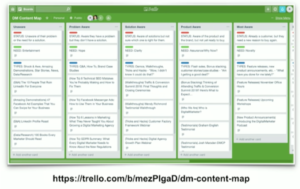Most marketers are aware of Eugene Schwartz’s book, Breakthrough Advertising, which is, in my opinion, the best marketing book ever written. Schwartz describes the 5 levels of awareness, a game changing concept that can really make the difference. I’m going to show you how we’ve applied it to marketing.

Prospective customers go through all of these stages (as outlined by Schwartz):
1) UNAWARE: In this stage, customers have no knowledge of the problem nor do they perceive a solution
2) PROBLEM: When a prospect senses they have a problem but are unaware of the solution
3) SOLUTION: They are aware of their problem, are aware solutions exist, but aren’t sure which solution is right for them
4) PRODUCT: Prospect knows about your product but they’re not sure if it’s right for them
5) MOST AWARE: Prospects know about your product and just need a reason to buy now
But I’ve taken the liberty of adding a sixth level of awareness—hopefully Eugene would approve of my expansion.
6) DISENGAGED: Prospect was aware, but has since become apathetic and disinterested.

Disengaged may describe most of the people who are currently subscribed to your email list but haven’t purchased much, if anything from you.
In this stage, the prospect neither loves nor hates you. They have just grown disinterested. The vast majority of the people who are associated with your brand don’t love or hate you, they are apathetic about you; they are disengaged.
What prospects need at this stage is romance, they need you to woo them, and they need a reason to connect with your brand at a personal level.
How can we produce content that will map to this specific stage?
One powerful way to engage a disengaged customer is to tell them your origin story. Why did you start your business in the first place? Are you carrying on a family legacy? What did you envision when you started your business? What challenges were you facing or did you face as a result of starting it?
You could also make fun of yourself in a public forum: make them laugh. Publish blooper videos that will show them the human side of your brand. Entertainment is a powerful and effective way to draw in an apathetic customer.
When you get started on your content planning to get people engaged, a great resource is Trello.

You can create a board for each level of awareness, as shown above. I recommend that you create one of these. Take an inventory of your existing content to see where you are lacking and allow that to inform the kind of content that you need to be producing moving forward.
Be in the habit of asking yourself—how can we produce content that will map to each stage of awareness?
Your marketing efforts will be more likely to succeed, leaving you with loyal, fully-devoted brand ambassadors.
If you thought this was interesting, we have MUCH more for you…
Interested in War Room? See if you qualify below.